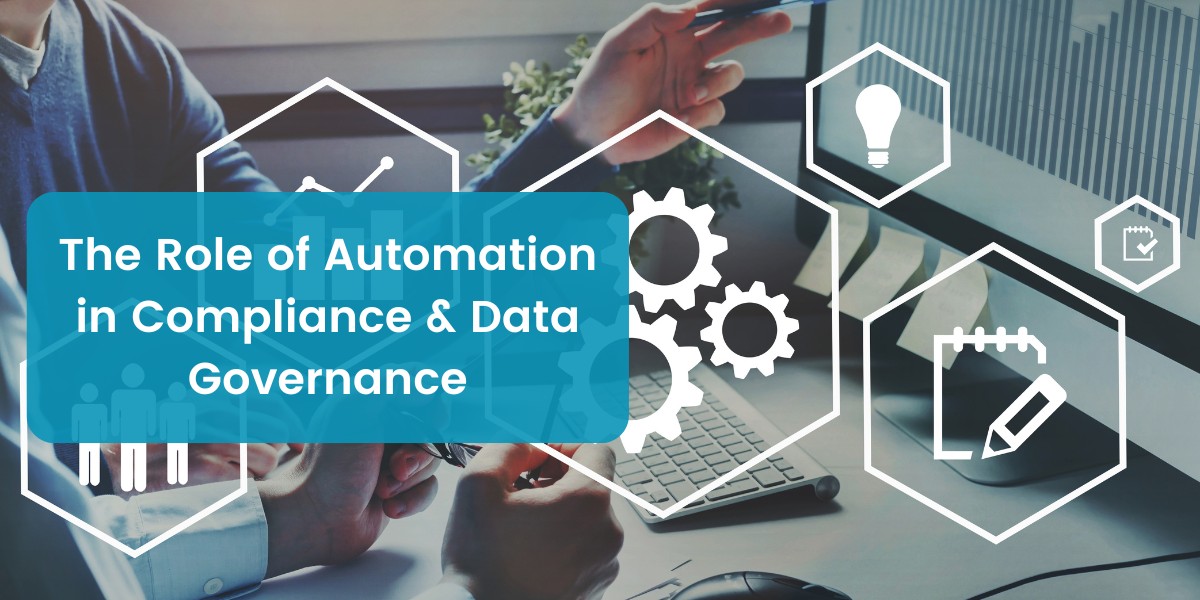
Automation in Compliance & Data Governance
As businesses handle increasing amounts of sensitive data, maintaining compliance with regulations like GDPR, PCI-DSS, and Cyber Essentials has become a critical challenge.
Automation can simplify compliance processes, reduce human error, and ensure that organisations meet legal and security requirements without burdening employees.
What's Compliance & Data Governance?
Compliance refers to the legal and regulatory requirements businesses must follow to protect customer data and maintain ethical operations.
Examples of compliance frameworks:
- GDPR (General Data Protection Regulation) - Governs how businesses collect and process personal data.
- PCI-DSS (Payment Card Industry Data Security Standard) - Ensures secure handling of payment card data.
- Cyber Essentials - A UK security framework for protecting business IT infrastructure.
- HIPAA (Health Insurance Portability and Accountability Act) - Regulates healthcare data security.
Data governance, on the other hand, is the strategy businesses use to manage and protect their data assets.
Core elements of data governance:
- Data Classification & Tagging - Identifying sensitive data to ensure proper handling.
- Access Control & Permissions - Restricting access to data based on user roles.
- Data Retention Policies - Automating data deletion based on legal requirements.
- Audit Trails & Monitoring - Keeping records of data access and modifications.
Compliance and data governance go hand in hand-businesses need structured policies and automated processes to enforce them effectively.
The Biggest Compliance Risks and Challenges
Many organisations struggle with compliance because of complex regulations and manual processes.
Common compliance risks include:
Human Error & Data Mishandling
Employees may accidentally share, delete, or mishandle sensitive data. Unstructured data storage makes it hard to enforce retention policies.
Failure to Restrict Access
Lack of role-based access controls leads to unauthorised users accessing sensitive information. Employees retain system access even after leaving the company.
Weak Security & Data Protection Measures
Businesses that fail to encrypt sensitive information risk cyberattacks. No real-time monitoring means security threats go undetected.
Audit & Reporting Challenges
Manual compliance reporting is time-consuming and prone to errors. Companies struggle to provide accurate records for regulatory audits.
Failing to address these challenges can lead to compliance violations, heavy fines, and reputational damage.
How Automation Strengthens Compliance and Governance
Manual compliance processes are inefficient and prone to human error.
Automation simplifies compliance management, ensuring that businesses meet regulations while reducing risk and administrative burden.
Key benefits of compliance automation:
1. Automated Data Classification & Protection
- AI-powered tagging automatically detects sensitive information (e.g., financial records, personal data).
- Data encryption policies are applied in real time, ensuring compliance with PCI-DSS and GDPR.
2. Real-Time Security & Access Control
- Role-based permissions automatically restrict access to sensitive data.
- Multi-factor authentication (MFA) prevents unauthorised access.
- User activity monitoring identifies suspicious login attempts.
3. Instant Compliance Reporting & Audit Trails
- Audit logs track who accessed or modified data, reducing the risk of fraud.
- Automated compliance reports provide real-time visibility into security policies.
4. Automated Data Retention & Deletion Policies
- Data expiry rules ensure compliance with GDPR's Right to be Forgotten principle.
- Automated archiving and deletion prevent businesses from storing data longer than legally required.
5. Incident Detection & Response Automation
- AI-driven threat detection identifies compliance risks before they escalate.
- Automated alerts notify security teams when data policies are violated.
By automating compliance processes, businesses can proactively manage security risks and ensure continuous regulatory adherence.
Real-World Examples of Automated Compliance Processes
Businesses across industries use automation to manage compliance more effectively.
Here are some real-world examples:
Finance & Payment Processing
- PCI-DSS Compliance: Payment data is encrypted automatically before storage.
- Fraud Prevention: AI monitors transactions for suspicious activity.
Healthcare & Patient Data Protection
- HIPAA Compliance: Electronic health records are securely stored and access-controlled.
- Data Anonymisation: Patient data is automatically anonymised for research purposes.
HR & Employee Data Management
- GDPR Compliance: Personal employee records are deleted automatically after a set retention period.
- Automated Access Revocation: Former employees lose system access immediately after leaving.
Call Centre & Customer Support
- Call Recording Compliance: Payment details are redacted from recorded phone calls.
- Automated GDPR Consent Management: Customers opt in/out of data collection through self-service portals.
Businesses that automate compliance processes reduce operational risk, improve efficiency, and ensure data security.
Steps to Implement Compliance Automation in Your Organisation
Follow these steps to integrate automation into your compliance and governance framework.
Step 1: Conduct a Compliance Risk Assessment
Identify which regulations apply to your industry (GDPR, PCI-DSS, HIPAA, etc.). Audit your current data governance policies and security measures.
Step 2: Automate Data Classification & Protection
Implement AI-powered tagging to detect and label sensitive data. Enable automatic encryption for personal and financial records.
Step 3: Establish Role-Based Access Control (RBAC)
Define who can access specific data sets based on job roles. Implement multi-factor authentication (MFA) to secure system logins.
Step 4: Set Up Automated Retention & Deletion Policies
Configure rules to automatically archive or delete outdated data. Ensure compliance with data retention laws (GDPR, industry-specific regulations).
Step 5: Monitor & Report Compliance in Real-Time
Use AI-driven compliance dashboards to track security risks. Automate audit reports to generate compliance documentation on demand.
With the right automation tools, businesses can enforce compliance seamlessly while reducing administrative workload.
Make Compliance & Data Governance Effortless with Automation
As regulatory requirements evolve, businesses must take a proactive approach to compliance and data security.
- Eliminate human error by automating security policies.
- Ensure compliance with GDPR, PCI-DSS, and other regulations.
- simplify audits and reporting with real-time compliance monitoring.
- Strengthen data protection to build customer trust and avoid legal risks.
By using automation, businesses can simplify compliance, protect sensitive data, and operate with confidence.
Ready to Secure Your Payment Processing?
Paytia provides secure, PCI DSS compliant payment solutions that protect your business and customers. Learn how we can help you reduce compliance burden while improving security.
